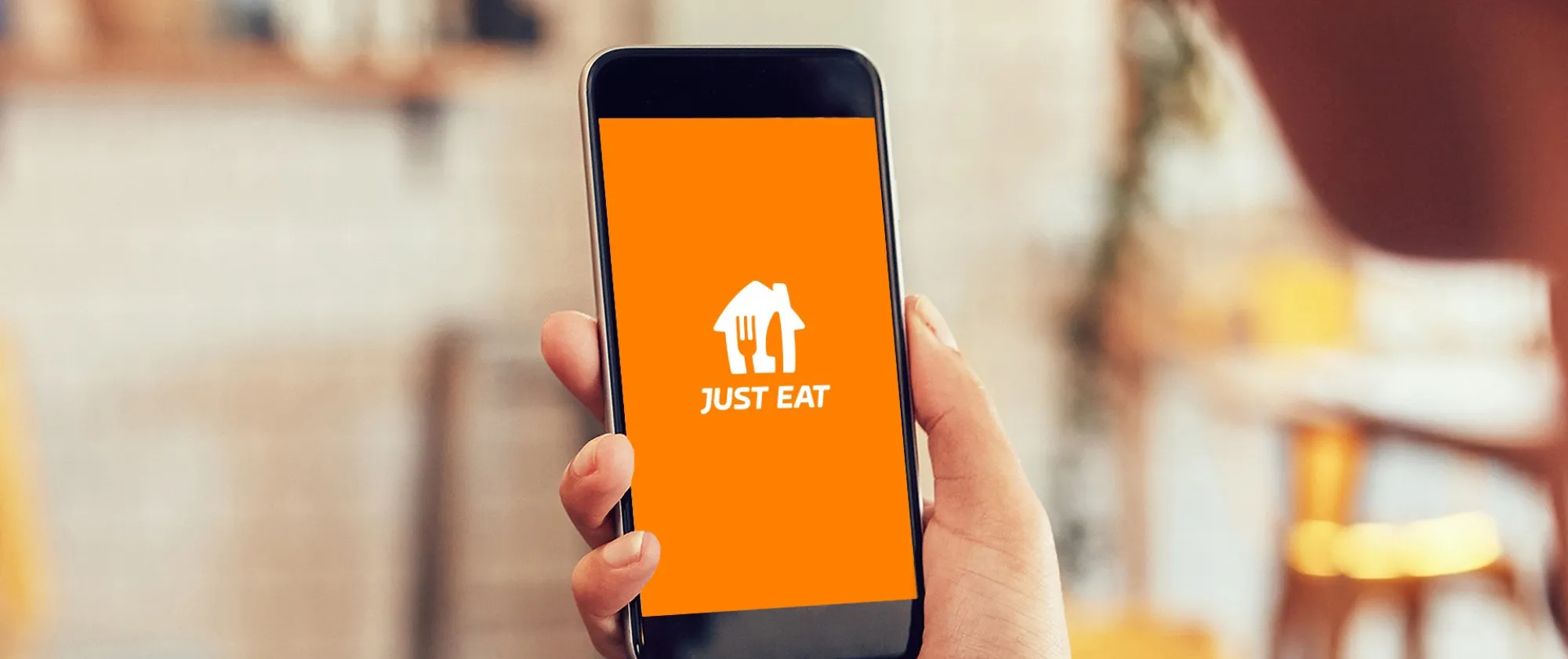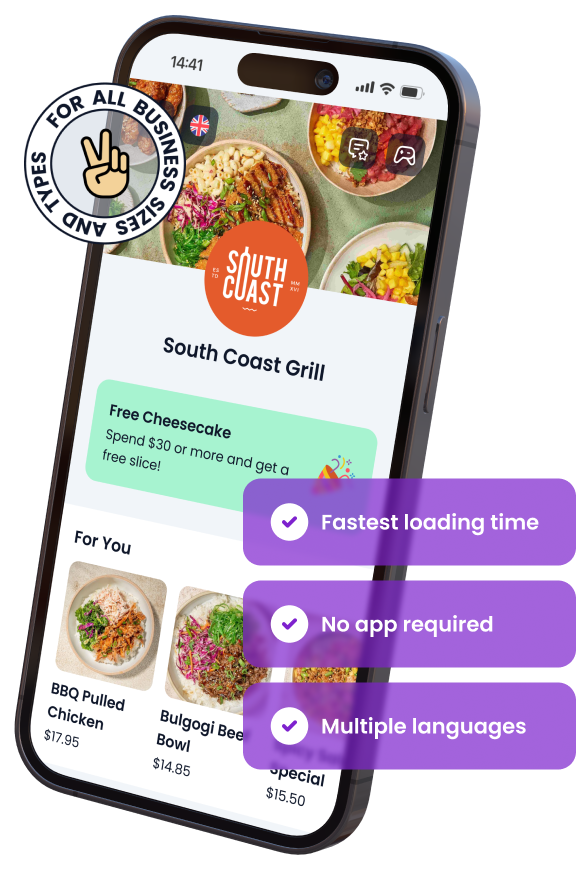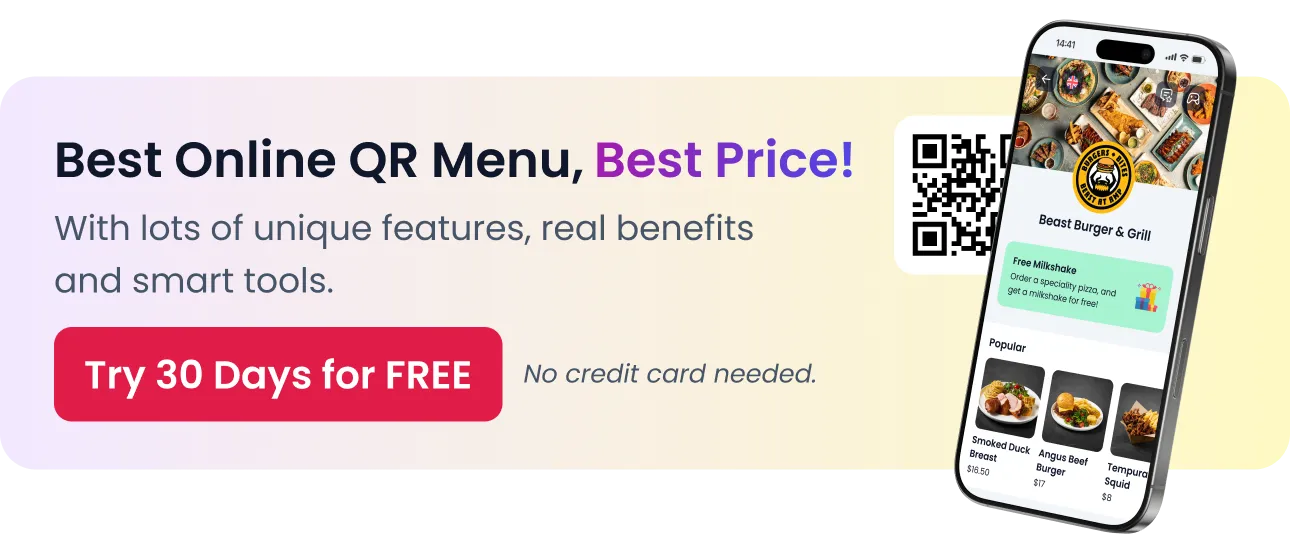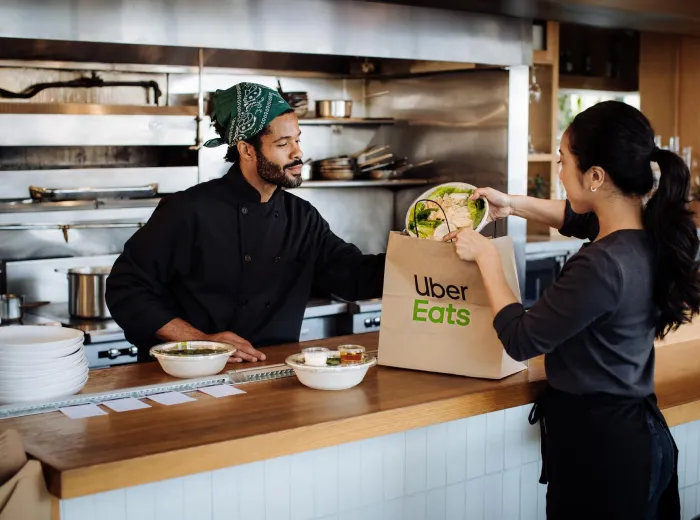

Just Eat Fees and Commissions for Restaurants: Detailed 2025 Guide
In today’s crowded delivery landscape, Just Eat remains one of the most influential platforms for UK restaurants looking to boost their reach and grow online orders. Whether you’re a high-street takeaway, a neighbourhood café, or a growing multi-branch brand, chances are you’ve either considered Just Eat — or you’re already on it.
But with increasing costs and shifting consumer expectations, many restaurant owners are starting to ask tougher questions:
- What are the real fees and commissions involved?
- Is it still worth staying on Just Eat in 2025?
- Are there smarter ways to make it profitable — or even negotiate better terms?
This guide pulls back the curtain. You’ll get a clear, practical breakdown of Just Eat’s current commission structure, optional extras, delivery models, and potential profit traps — along with smart ways to reduce fees, optimize orders, and evaluate whether it’s the right fit for your business this year.
Whether you’re already listed or just weighing your options, this is the kind of guide you’d want before signing a contract — or before renewing one.
Why Just Eat Still Matters for Restaurants in 2025
While newer delivery platforms and direct ordering tools have entered the market, Just Eat continues to play a pivotal role for many restaurants across the UK. Its broad user base, marketing reach, and logistical infrastructure make it hard to ignore — especially for small to mid-sized operators looking to stay competitive.
Here’s why the platform still earns its place in many restaurant strategies:
The platform’s reach across the UK and beyond
Just Eat has maintained its dominance by building an enormous presence across the UK — not just in London or big cities, but in smaller towns and rural areas too.
Restaurants benefit from exposure to millions of active users who are already in the habit of browsing Just Eat for their next meal.
If you’re in a non-central area or a suburb underserved by other platforms, Just Eat may be the only app customers are regularly using.
How Just Eat impacts order volume and brand exposure
Being on Just Eat is like having a digital storefront in a busy shopping centre — the foot traffic is built-in.
Restaurants often report a noticeable spike in order volume when first joining, thanks to Just Eat’s push notifications, featured spots, and app user loyalty.
Even if your margins are slimmer, the volume boost can fill dead hours or off-peak days, especially if you’re newer to the market.
Not just delivery — takeaway and collection opportunities
Just Eat isn’t limited to home delivery. Their “collection” feature allows restaurants to serve customers who want to skip queues or save on delivery fees.
This makes the platform valuable even for spots that don’t offer delivery at all — such as sushi bars, bakeries, or family-owned fish and chip shops.
It’s a low-cost way to increase convenience for local regulars without adding the pressure of delivery logistics.
Just Eat may not be perfect, but in 2025, it’s still a reliable, high-visibility channel that helps thousands of restaurants reach new customers and drive consistent order flow — especially when used strategically.
What Are Just Eat’s Fees and Commission Rates in 2025?
Understanding Just Eat’s fee structure is essential to calculating your real margins. Fees come in multiple layers, and knowing which apply to your business will help you price smartly and manage profits effectively.
Commission on delivery orders
- Typically ranges from 14% to 35% per order, depending on your plan and geographic location.
- Higher-volume or premium restaurants may secure lower percentage points, while smaller independents often land near the top of the range.
- This fee comes out of your menu revenue, so your menu pricing needs to absorb it.
Commission on collection orders
- Collect customers pay lower fees — usually 8% to 15%, since Just Eat doesn’t handle drivers.
- A smart option for cafés or bakeries that prefer local pickup rather than delivery.
- Always ask whether your fee structure changes when switching between delivery and collection.
Monthly subscription or platform fees
- Some restaurants opt for premium listing features or higher placement in search and pay a flat monthly charge.
- These fees range from £10 to £50+ per month, depending on additional marketing or support tiers.
- Decide whether it’s worth paying for better exposure relative to the incremental orders gained.
Payment processing and transaction fees
- Just Eat may charge a small card processing fee (typically around 1–2% of transaction value).
- If you choose their integrated POS or financial reporting tools, there may be one-off setup or ongoing administration fees.
- Don’t overlook currency differences — for example, in cross-region sales or multi-currency cards when abroad.
By mapping out exactly which fees apply to your setup — delivery vs collection, plan tier, and payment routing — you gain full visibility on the true cost per order. That clarity sets the stage for strategic pricing and margin management.
Pricing Tiers and Plans — What Options Do You Have?
Just Eat isn’t a one-size-fits-all solution. Depending on your location, order volume, and whether you use their drivers or handle deliveries yourself, you’ll likely be offered one of several pricing structures. Understanding these options upfront can help you pick the plan that best fits your restaurant’s growth goals — and avoid surprises on your monthly invoice.
Standard vs. Premium listings
Just Eat offers visibility-based tiers, which directly affect how your restaurant appears in search results on the app or website.
- Standard Listing: Your restaurant shows up in organic search results, typically further down the list. You pay the base commission rate (often the highest).
- Premium Listing: You appear higher up — sometimes with sponsored placement or priority during peak hours. This typically comes with a higher flat fee or additional commission %, but can boost order volume significantly.
Think of it like digital real estate: better placement often leads to more visibility — and more sales.
Contract length and minimum terms
Just Eat contracts usually require a minimum commitment period, often between 6 and 12 months.
- Early termination may incur penalties or forfeiture of bonuses.
- Some flexible or pilot plans are offered in select areas for newer or seasonal businesses.
Always check the cancellation clause and renewal terms before signing — especially if your business is still in the testing phase.
Performance-based models (if offered)
In select cases, Just Eat may offer custom commission rates tied to your monthly order volume or customer ratings.
- High-performing restaurants (e.g., consistent 4.5+ star reviews and strong sales) may qualify for lower rates or special incentives.
- Multi-location operators or chains may also receive group-negotiated terms with discounts or rebates.
If you’re hitting strong numbers, don’t hesitate to ask for a review of your current tier — especially after your first few months on the platform.
Your pricing plan will have a direct impact on your profitability. Choose based on your goals — not just your current sales. For new or seasonal operators, starting with a lower-visibility plan can be more cost-effective. But for established brands looking to scale quickly, premium exposure may well pay for itself.
Who Handles the Delivery — You or Just Eat?
When joining Just Eat, one of the most important choices you’ll make is how delivery will be fulfilled. This decision affects not just logistics and staffing, but also how much commission you pay and how your brand is perceived by customers.
There are two main models — and each comes with distinct advantages and trade-offs:
Just Eat-delivered vs. self-delivery
Just Eat-delivered means the platform takes care of the entire delivery process:
- A courier from Just Eat (or a third-party partner like Stuart) picks up the order and handles delivery to the customer.
- You pay higher commission rates (typically 30–35%) to cover the logistics cost.
- It reduces staffing burdens, especially useful for businesses without in-house drivers.
Self-delivery means your team handles the last-mile delivery:
- You retain control over the driver, the timing, and the customer experience.
- Commission is typically lower (around 14–18%), since Just Eat is only providing order generation and payment processing.
- You take on the responsibility — and cost — of hiring, training, and managing drivers.
Choosing self-delivery gives you more control and better margins — but it also means more work behind the scenes.
Pros and cons of each delivery model
| Factor | Just Eat-Delivered | Self-Delivery |
|---|---|---|
| Commission rate | Higher (30–35%) | Lower (14–18%) |
| Driver management | Handled by Just Eat | Your responsibility |
| Brand control | Limited (third-party courier) | Full (your staff, your standards) |
| Customer experience | Depends on external couriers | You control timing and service |
| Operational complexity | Low | High |
| Best for… | Startups or small kitchens | Restaurants with delivery teams |
In short: if you want simplicity, use Just Eat’s delivery. If you want higher profit and brand control, consider managing it yourself — especially once you hit consistent volume.
Before deciding, consider your current staffing, kitchen speed, delivery radius, and how much customer service you’re willing to take on. For many restaurants, a hybrid model — Just Eat-delivered for distant customers, self-delivery for nearby ones — offers the best of both worlds.
How Much Do Restaurants Actually Pay? Real Scenarios
To truly understand Just Eat’s financial impact on your business, you need to move beyond commission percentages and look at actual, real-world scenarios. Below are sample breakdowns for different types of restaurants — showing how much ends up in your pocket after platform fees.
These examples assume typical 2025 rates based on plan type, delivery method, and average basket size.
Scenario 1 — Small Suburban Takeaway (Self-Delivery)
Business type: Family-owned kebab shop in a residential area
Model: Self-delivery
Commission rate: 14%
Average order value: £18
Sample Breakdown:
- Order total: £18.00
- Just Eat commission (14%): –£2.52
- Payment processing fee (1.5%): –£0.27
- Net payout to restaurant: £15.21
With self-delivery and low commission, this model allows for solid margins — as long as delivery costs are well managed in-house.
Scenario 2 — Mid-Sized Urban Restaurant (Just Eat-Delivered)
Business type: Burger and wings restaurant in a busy high street
Model: Just Eat provides delivery
Commission rate: 32%
Average order value: £25
Sample Breakdown:
- Order total: £25.00
- Just Eat commission (32%): –£8.00
- Payment processing fee (1.5%): –£0.38
- Net payout to restaurant: £16.62
In this setup, while delivery is hassle-free, one-third of the order value goes to the platform, so pricing must be adjusted to protect margins.
Scenario 3 — Multi-Unit Operator on Negotiated Plan
Business type: Regional pizza chain with 8 locations
Model: Mix of self-delivery and Just Eat-delivered
Commission rate: 20% (negotiated volume rate)
Average order value: £22
Sample Breakdown:
- Order total: £22.00
- Just Eat commission (20%): –£4.40
- Payment processing fee (1.5%): –£0.33
- Net payout to restaurant: £17.27
This group leveraged their volume to get a lower commission, proving that negotiation can lead to meaningful savings over time.
Summary Table — Real Fee Impact by Model
| Scenario | Model | Order Value | Commission % | Just Eat Fee | Net to Restaurant |
|---|---|---|---|---|---|
| Small takeaway | Self-delivery | £18.00 | 14% | £2.52 | £15.21 |
| Urban restaurant | Just Eat-delivered | £25.00 | 32% | £8.00 | £16.62 |
| Multi-location chain | Mixed (negotiated) | £22.00 | 20% | £4.40 | £17.27 |
These scenarios highlight one key truth: commission rates alone don’t tell the full story. Your delivery setup, order size, and negotiation leverage all affect how much you really take home — and how profitable Just Eat can be for your business.
Extra Costs That Can Creep Up If You’re Not Careful
Just Eat’s commission might be the headline number, but it’s rarely the only cost you’ll face. Many restaurant owners get caught off guard by optional add-ons, unexpected deductions, or hidden operational charges that quietly chip away at profits over time.
Here’s what to watch out for — and how to stay ahead of them:
Paid promotions and featured listings
Just Eat offers promotional tools like featured placement, boosted listings, or discounts pushed via the app. These can drive short-term traffic, but they come at a price.
- Featured placement might cost an additional fee per week or higher commission rates during the promo period.
- Participating in app-wide discounts or “free delivery” deals may be subsidized by the restaurant, not Just Eat.
Always review the ROI before opting into paid promos — what looks like a traffic spike may cost more than it earns.
Menu changes and integration support fees
While some updates are self-managed, more complex menu adjustments — especially for restaurants using integrated EPOS systems — may involve admin or tech support fees.
- Menu syncing errors or delays can lead to wrong pricing or missed items, costing you in refunds or lost sales.
- Some third-party integrators charge monthly platform connection fees in addition to Just Eat’s costs.
Make sure you understand who’s managing your menu — and whether you’re paying extra for that convenience.
Packaging, refunds, and order issues
When a Just Eat order goes wrong, the cost often falls back on you — even if the mistake wasn’t yours.
- Missing items or cold food can result in customer refunds deducted from your payout.
- Complaints tied to driver performance (e.g., long delivery times) may still be counted against your restaurant score.
- Packaging upgrades, such as tamper-proof bags or insulation wraps, may be needed to reduce refund risk.
These costs are often indirect but accumulate fast, especially if order volume is high.
Late order penalties or performance-related fees
Some restaurant partners report “adjustments” on their statements due to poor service levels, late preparation, or cancellations.
- If you’re repeatedly late, Just Eat may temporarily reduce your visibility or apply small financial penalties.
- Too many late orders can impact your customer rating — and lead to automatic exclusion from app promotions.
Maintain realistic prep times and make sure your team hits them — reliability is part of your bottom line.
While Just Eat gives you access to more orders, it also introduces more ways to leak margin. Staying proactive with your menu, packaging, order handling, and optional marketing spend is the best way to ensure those extra costs don’t sneak up and hurt your business.
How Do Just Eat Payouts Work?
Understanding how and when you get paid is critical for managing cash flow — especially if you rely heavily on delivery orders. While Just Eat’s payout system is fairly automated, there are important details that every restaurant should be aware of to avoid surprises or delays.
Weekly payment cycles and timelines
Just Eat typically operates on a weekly payout schedule, transferring funds to your designated bank account.
- Payments usually cover Monday to Sunday orders, and funds are sent the following week, often by Thursday or Friday.
- Public holidays and bank delays can shift this timing slightly.
Keep in mind that while orders are daily, revenue arrives in weekly batches — plan your purchasing and payroll accordingly.
Deductions and invoice reconciliation
Before transferring funds, Just Eat deducts:
- Commission fees
- Transaction/processing charges
- Refunds or adjustments due to order issues
- Optional marketing spend (e.g., promotions, boosted listings)
Your weekly invoice or remittance report will show a full breakdown of:
- Gross sales
- Each deduction category
- The final net amount paid to you
Always compare your POS totals with Just Eat’s invoice — small discrepancies can add up over time.
What to do when you spot a discrepancy
If your payout seems lower than expected or you notice incorrect deductions:
- Log in to your Just Eat Partner Centre and check the “Payments” section for detailed invoices.
- Use the “Raise a Query” or “Payment Dispute” feature to submit concerns.
- Keep order numbers, timestamps, and screen captures ready — the more specific you are, the faster the resolution.
Response times are usually 24–72 hours, but escalations may be required for repeated or high-value issues.
Just Eat’s payout system is designed to be low-maintenance — but that doesn’t mean you can ignore it. Make time to review your weekly statements, track patterns, and investigate any recurring deductions. Staying on top of this keeps your finances accurate — and your trust in the platform intact.
What Do You Get for Those Fees? Value Beyond Orders
At first glance, Just Eat’s commission rates might feel steep — especially when you’re watching margins closely. But beyond simply processing orders, the platform offers several added benefits that can help grow your brand, reach new customers, and improve operational performance. The key is knowing how to use those perks to your advantage.
Marketing reach and national brand presence
Just Eat invests heavily in national advertising — including TV, radio, billboards, and digital campaigns. When your restaurant is listed, you benefit from that exposure without spending a penny on media.
- You’re part of a platform that customers already trust and visit daily.
- Campaigns like “Did Somebody Say Just Eat?” keep the brand top of mind — and your menu one tap away.
For many small operators, this level of reach would otherwise be unaffordable on their own.
Access to app users and push notifications
With millions of app users, Just Eat provides a direct line to customers browsing in your area.
- Your restaurant can appear in search filters like “Near Me,” “Top Rated,” or “New on Just Eat.”
- Push notifications during peak hours can highlight promos or your restaurant specifically (if part of a campaign).
Even if you’re not paying for ads, being listed during busy times puts you in front of hungry users — and that visibility matters.
Analytics and business insights
Through the Just Eat Partner Centre, you gain access to valuable performance data that can help you make smarter business decisions.
- Track order volume trends, best-selling dishes, and customer ratings.
- Identify peak order times, allowing you to optimize prep schedules and staffing.
- Review customer feedback to spot areas for improvement or standout strengths.
Think of it as a basic BI tool — without needing to build dashboards or pay for reporting software.
Operational support and tech infrastructure
Just Eat provides tools and resources to help you run your online ordering efficiently:
- Order management systems that integrate with many EPOS platforms
- Tablet or printer devices for managing orders, if you don’t already have one
- Customer support to handle delivery complaints and certain disputes
It’s not just marketing — it’s a full ecosystem designed to plug into your daily ops.
While fees can seem high, the value goes beyond order processing. Just Eat acts as a digital marketing engine, logistics partner, and business intelligence platform — if you know how to tap into all it offers. For restaurants willing to engage with the tools, the return on investment often goes far beyond the commission percentage alone.
Is It Worth Staying on Just Eat in 2025?
With rising fees, increased competition, and the growth of direct ordering platforms, it’s fair to ask: Is Just Eat still pulling its weight for your restaurant? The answer isn’t the same for everyone — it depends on your business model, margins, and goals. Here’s how to evaluate whether it’s still a good fit in 2025.
When Just Eat works well for your model
For many independent restaurants and smaller operations, Just Eat continues to offer strong upside — especially when used strategically.
It tends to work well if:
- You’re in a high-density delivery zone or a lower-competition area
- Your average order value is strong (above £20) and can absorb the commission
- You lack the budget or time for direct marketing and ad spend
- Your kitchen has spare capacity during off-peak hours
For many operators, Just Eat is a low-effort channel that fills gaps and drives steady baseline orders.
Signs you may be overpaying
Not every restaurant sees consistent value — and staying on the platform out of habit can cost you.
It may be time to reconsider if:
- Your Just Eat commission has crept above 30–35%, and margins are squeezed
- Direct orders now outpace aggregator sales, and you’re building brand loyalty elsewhere
- You’re reliant on paid promos just to stay visible on the app
- Refunds, late orders, or tech issues are hurting your brand experience
If Just Eat becomes a high-cost channel with low ROI, your profits may improve by pulling back.
Comparing with Deliveroo, Uber Eats, and others
The delivery space is more competitive than ever. While Just Eat remains strong in many areas, other platforms may offer:
- Lower fees or better incentives in certain regions
- Better support for higher-end brands or dine-in concepts
- More flexible contract terms or marketing tools tailored to your brand
It’s worth testing your performance across two or more platforms to see where your concept thrives.
Think blended — not binary
You don’t have to choose “Just Eat or nothing.” Many successful restaurants treat Just Eat as one part of a multi-channel strategy, alongside:
- A direct online ordering system (via QR code or website)
- Other aggregator apps
- Social media-driven pickup orders or phone-in sales
Diversifying gives you more control over your customer base and reduces reliance on any single platform.
Bottom line: Just Eat can still be worth it — but only if it’s aligned with your numbers and goals. Don’t be afraid to reevaluate every quarter. Like any business partner, if the value exchange shifts, so should your strategy.
Ways to Improve Profitability on the Platform
If you’re using Just Eat — or planning to — the key to making it work long-term is maximizing your net profit per order, not just driving volume. Fortunately, there are several smart strategies restaurants can use to keep margins healthy without sacrificing customer experience or order flow.
Optimise your menu pricing for commission
One of the most effective — yet often overlooked — tactics is strategic pricing.
- Review each item’s profit margin and adjust prices specifically for Just Eat to absorb the 14–35% commission.
- Bundle items (e.g., “meal deals” or “combo offers”) to increase average order value while reducing cost per item.
- Add delivery-only specials with higher markup to encourage upsells.
Don’t just copy your in-house prices — structure your delivery menu with the platform’s fees in mind.
Create “delivery-friendly” high-margin items
Certain foods travel better and generate fewer complaints or refund risks. Focus on items that are:
- Easy to package
- Have longer holding temperatures
- Allow for low food cost and high perceived value
Examples:
- Rice bowls, loaded fries, wraps, burgers, pasta dishes
- Sides like dips, wings, desserts, or drinks that boost ticket value at minimal cost
A smart delivery menu isn’t about offering everything — it’s about offering the right things profitably.
Reduce operational mistakes that cost you
Errors and delays not only harm your customer rating — they also eat into your margins through:
- Refund deductions
- Negative reviews (which lower visibility)
- Repeat customer loss
Improve profitability by:
- Using clear kitchen printouts or displays for delivery orders
- Assigning a dedicated expediter to double-check packaging during peak hours
- Monitoring timing metrics in your Partner Centre dashboard
A few minutes saved or a refund avoided can make a noticeable difference over time.
Upsell and cross-sell like a pro
Just Eat allows you to add “extras” or modifiers to each menu item — use this space to:
- Offer premium upgrades (extra cheese, larger portion, toppings)
- Suggest high-margin add-ons like bottled drinks, sauces, or sides
- Pre-build “value meals” that encourage full meals instead of single dishes
Upsells cost little, take no extra packaging time, and can easily raise your AOV by 10–20%.
Manage delivery zones and timing strategically
Don’t stretch your team thin by accepting all orders.
- Limit delivery radius to areas where your driver or Just Eat’s courier can reliably deliver on time.
- Disable ordering during peak in-house hours if kitchen capacity is tight — late delivery penalties can wipe out profit.
- Use scheduled ordering if available to smooth out order flow.
Controlled delivery = faster prep, fewer complaints, and more retained earnings.
Profitability on Just Eat is absolutely possible — but it doesn’t happen by default. With thoughtful pricing, focused menu design, and tighter operational discipline, your restaurant can thrive on the platform — not just survive.
Can You Negotiate Just Eat Fees? (Sometimes, Yes)
Yes — negotiation with Just Eat is possible, especially if your restaurant brings volume, consistency, or strategic value to the platform. But like any negotiation, you need leverage, timing, and a clear understanding of what you’re asking for. Don’t expect miracles, but do expect options — particularly once you’ve proven your worth.
When and how to approach negotiation
You’re more likely to succeed in negotiations if:
- You’ve been active on the platform for at least 3–6 months
- You’ve shown consistent weekly order volume
- Your customer rating is strong (typically 4.5 stars or higher)
- You operate in a high-demand cuisine category (e.g. pizza, burgers, Asian fusion)
Steps to negotiate:
- Log in to the Partner Centre and find the “Contact” or “Account Manager” section
- Prepare your case with specific data: order volumes, reviews, speed metrics
- Request a review of your commission rate, citing performance or multi-location presence
- Be polite but firm — and ask if there are available incentives or adjustments
The best time to renegotiate is after you’ve proven performance — not before.
What leverage do you actually have?
Negotiation success depends on how valuable you are to Just Eat. Here’s what gives you bargaining power:
- High volume of weekly orders (ideally over 100–150 per week)
- Multi-location operations — chains often get discounted commission tiers
- Serving a popular cuisine in an area where Just Eat has limited options
- Excellent delivery and customer satisfaction metrics
Even small restaurants can negotiate if they’re in a strategic location or consistently outperform competitors nearby.
Volume, consistency, and uniqueness in your area = leverage.
What results can you realistically expect?
Don’t expect to drop from 35% to 10% overnight — but meaningful reductions are possible.
Common negotiation outcomes:
- A lower commission tier (e.g., dropping from 32% to 25%)
- Temporary promotional fee waivers or listing upgrades
- Custom plans for chain partners or high-volume single locations
- Access to free featured listing trials
Even a 3–5% commission reduction can lead to thousands of pounds in annual savings, depending on your order volume.
Negotiation isn’t guaranteed — but not asking leaves money on the table. If you’ve got the performance data and a good relationship with the platform, make the ask. The worst they can say is no — and they often say yes when the numbers make sense.
Alternatives to Consider Alongside or Instead of Just Eat
Just Eat may be one of the UK’s largest food delivery platforms — but it’s not the only game in town. In fact, building a multi-channel presence (or even going direct) can help reduce dependency, improve margins, and give you more control over your customer relationships.
Here are the most viable alternatives you should evaluate — whether you want to replace Just Eat entirely or simply balance your online strategy.
Direct ordering through your own website or app
Setting up a branded online ordering system allows you to:
- Avoid commissions altogether
- Own the customer data (emails, preferences, reviews)
- Send repeat offers and loyalty rewards without platform restrictions
- Set your own policies, prep times, and delivery radius
Popular tools include:
- Online ordering plugins for your website
- QR menu and ordering platforms like Menuviel that enable commission-free takeaway and dine-in orders
- POS-integrated solutions with mobile app ordering
If you already have loyal customers, going direct can quickly improve your bottom line — especially for collection or dine-in.
Partnering with other aggregators
Expanding your presence across multiple marketplaces can improve reach — and create leverage during fee negotiations.
Major competitors to Just Eat include:
- Deliveroo – Strong in city centres, better suited for premium casual or fast casual
- Uber Eats – Powerful tech ecosystem, large driver pool, and global reach
- Foodhub – Lower commissions but smaller audience; good for independent takeaways
- Local/regional apps – Some areas have niche platforms with better service or lower fees
Trial multiple platforms for 3–4 months to compare sales, ratings, and profitability before committing long-term.
Commission-free QR menu platforms like Menuviel
Menuviel offers restaurants an elegant way to:
- Publish a real-time, interactive QR code menu
- Offer commission-free table ordering and takeaway pickup
- Tag dishes with allergens, dietary badges, and availability filters
- Keep full control of pricing, photos, and promotions — with no third-party middlemen
It’s a modern solution for dine-in and pickup-heavy operations that want a cost-efficient, brand-controlled experience.
Many restaurants use Menuviel alongside Just Eat to channel returning guests away from commissions and toward direct ordering.
Choosing the right mix of platforms comes down to your goals. If you want maximum visibility, stay on Just Eat and add others. If you want higher profits and customer ownership, invest in your own system. Often, the smartest approach is a hybrid model that lets third-party apps acquire new customers — and your direct channels keep them coming back.
Quick Checklist Before You Sign or Renew
Before you commit to Just Eat — or renew an existing agreement — it’s critical to pause and evaluate whether the platform is serving your restaurant’s goals and margins. This checklist will help you make a confident, informed decision and avoid costly surprises down the line.
📋 Commission & Cost Review
- ☐ Do you know your current commission rate (delivery and collection)?
- ☐ Have you reviewed all hidden fees (e.g. promotions, payment processing, device charges)?
- ☐ Have you compared your margins with and without the platform?
🧾 Performance & Profitability
- ☐ Are your average order values high enough to offset the commission?
- ☐ Are delivery refunds, delays, or late prep times affecting your payout?
- ☐ Do you track Just Eat ROI weekly or monthly to monitor its profitability?
📈 Exposure & Value
- ☐ Are you appearing in local Just Eat search results consistently?
- ☐ Have you tested or used any of their promotional tools — and tracked their impact?
- ☐ Have you explored upgrading or downgrading your listing tier based on results?
🤝 Negotiation & Flexibility
- ☐ Are you eligible for lower commission rates based on order volume or positive reviews?
- ☐ Have you asked your account manager about available incentives or custom plans?
- ☐ Are you locked into a long-term contract, and do you know the exit terms?
🔄 Diversification & Backup
- ☐ Are you listed on other aggregators like Uber Eats, Deliveroo, or Foodhub?
- ☐ Do you have a direct ordering system (website, app, or QR menu) to reduce dependence?
- ☐ Is your staff trained to handle both Just Eat orders and direct sales efficiently?
Checking all the boxes doesn’t mean you must stay on Just Eat — it simply means you’re making the decision with full visibility and control. A smart partnership starts with knowing your numbers, your alternatives, and your goals.
Key Takeaways
Navigating Just Eat’s platform in 2025 requires more than just signing up — it demands a clear understanding of the costs, benefits, and strategies that impact your bottom line.
- Just Eat remains a valuable tool for restaurants seeking visibility, especially in areas where the app dominates consumer habits.
- Commission rates typically range from 14% to 35%, with additional costs like transaction fees, packaging needs, and optional promotions.
- You can choose between Just Eat-delivered and self-delivery models, each with its own impact on cost, control, and service.
- Real-world earnings vary widely, so knowing your margins and analyzing payout reports is essential.
- Hidden costs — like refunds, late order penalties, and paid promotions — can eat into profits if not closely monitored.
- Negotiation is possible for high-performing or multi-location restaurants — don’t be afraid to ask.
- Diversifying your online presence with direct ordering systems or other platforms like Deliveroo or Menuviel can reduce dependency and improve profitability.
- Profitability on Just Eat comes down to smart menu design, upselling, pricing, and operational consistency.
By treating Just Eat as one part of a broader growth strategy — not your only sales channel — you’ll be in a much stronger position to grow sustainably in 2025 and beyond.
Frequently Asked Questions About Just Eat Fees and Commissions for Restaurants
If you’re a restaurant owner considering partnering with Just Eat or trying to understand their fee structure better, you’re not alone. Below are the most frequently asked questions restaurant operators search for when evaluating Just Eat’s commission rates and pricing model.
What commission does Just Eat charge restaurants in 2025?
Just Eat typically charges restaurants a commission rate ranging from 14% to 35% per order, depending on the service model, location, and promotional agreements. Delivery services provided by Just Eat often incur higher commission rates compared to self-delivery models.
Are there any fixed monthly fees for restaurants using Just Eat?
Yes, Just Eat charges a monthly subscription or access fee, which can range from £25 to £50+ VAT, depending on your agreement and location. This is separate from the per-order commission and covers your listing and access to Just Eat’s platform.
How does Just Eat's delivery service impact commission rates?
When restaurants opt for Just Eat’s logistics support (Just Eat Delivery), commission rates are usually higher, as the platform takes care of the last-mile delivery. Restaurants that handle their own deliveries may pay lower commission fees.
Can restaurants negotiate lower Just Eat commission rates?
In some cases, especially for high-performing or multi-location restaurants, Just Eat may be open to negotiating reduced commission rates. However, this is typically done on a case-by-case basis and depends on order volume, customer ratings, and promotional participation.
Is being on Just Eat worth the fees for small restaurants?
For many small restaurants, Just Eat provides increased exposure, online ordering convenience, and access to a larger customer base. While the fees can impact profit margins, the potential boost in sales and brand visibility can often outweigh the costs when managed effectively.
ABOUT THE AUTHOR
Erkin Coban
Your Customers Deserve The Best
And we got Menuviel for them.
The fastest and easy-to-use online QR menu with 12+ unique features. Choose Menuviel and elevate your service quality to the next level.
Use free for the first 30 days.

In This Article

Free AI Tools for Restaurants
TRY NOW ➜

Manage what’s available - anytime, instantly
Show or hide menus, categories, or items instantly. Perfect for time-based offerings or sold-out dishes.





